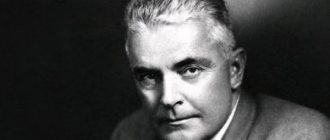Avoidance is one of the forms of human behavior that is observed in a certain situation or life circumstances. Sigmund Freud is considered the first psychologist to study this phenomenon.
The Austrian psychologist and psychotherapist identified the avoidance reaction as a separate strategy of a person’s mental activity, which is a mechanism for escaping from conflict situations and the harsh reality of life.
Based on the results of his research, Sigmund Freud formulated the term “escapism”, which in simple psychology means “escape”, “salvation from unpleasant events” or “avoidance” of something.
Definition of the term escapism. What it is
In psychology, avoidance is a mechanism of a defensive reaction of the psyche aimed at maintaining the usual comfort zone. With the help of a series of specific actions or deliberate inaction, a person avoids the influence of one or a whole complex of negative factors and life circumstances.
The avoidance reaction is triggered in response to a paralyzing feeling of fear of the possible occurrence of feelings of pain, psychological discomfort or strong emotional experiences. Quite often, the mechanism of evading the influence of negative factors is formed as a protective barrier in response to a previously experienced stressful situation or demoralization.
The concept of avoidance in psychology has a deep meaning when it comes to the general strategy of human behavior. In this case, avoidance of negative environmental factors becomes permanent and also affects all areas of an individual’s life.
For example, a person builds his behavior model according to the principle of least resistance, showing passivity in response to any events in the outside world. Such mental reactions may be associated with a low level of intellectual development, the presence of latent or indolent psychoneurological diseases, and a sluggish and weak-willed temperament.
The most common manifestation of avoidance is observed in people with an active life position, who have all the necessary set of volitional qualities, normal intellectual development, but at the same time always strive to get away from a conflict situation.
In this case, the instinct of self-preservation is activated, avoiding potentially dangerous or unpleasant actions with minimal energy and physical costs.
In psychology, avoidance is one of the results of a person making an internal decision in response to negative environmental factors.
After understanding the current situation, there is a refusal to display any form of aggression, enter into a fight and implement volitional efforts. In general, it is believed that avoidance is a pattern of behavior that is unconstructive and also limits the personality in further development.
Pros of poutine
One of the main advantages of doing a routine task is the minimal amount of energy spent on it. A task that is constantly repeated becomes commonplace and ceases to require significant effort. And often people even begin to feel uncomfortable because, for example, they overslept during a run or did not have time to make their bed in the morning.
This feature can be explained quite simply - learning a new skill is always accompanied by increased energy expenditure, but performing familiar, everyday work occurs in energy saving mode. Consequently, turning any task into an everyday routine can bring unexpected practical benefits: in addition to the fact that performing this work will require minimal effort from you, it will be difficult for you to abandon an activity that has become a habitual ritual.
Classification
Avoidance in psychology is a defensive reaction of the psyche in response to the influence of negative environmental factors. The table below lists the main types of this behavior strategy, which can be observed in children of a younger age group, adolescents and adults of all age groups.
Schematic of avoidant behavior in psychology.
| Classification types of psychological strategy of avoidance | Features of defensive reactions of the psyche |
| Passive avoidance | A distinctive feature of passive avoidance is that at the moment of the next tests of the external world, the individual does not show any volitional efforts to overcome them. People with this behavior pattern spontaneously develop a strategy for protecting themselves from the effects of negative environmental factors, which is based on saving the emotional component, intellectual and energy resources. An individual with a psychological model of behavior in the form of passive avoidance bypasses all potential areas of tension and conflict situations as soon as his personality is exposed to aggressive influence from other persons, or difficult life circumstances are present. The reasons for the formation of a behavioral strategy of passive avoidance always have a psychogenic nature of origin. Most people who profess this model of behavior are weak-willed, withdrawn people with a soft character. Quite often there are cases when the protective mechanism of the psyche in the form of a strategy of passive avoidance began to form after experiencing psychological trauma. |
| Active avoidance | Active avoidance is a unique model of individual behavior, which is more conscious and is also based on acquired life experience and high intellectual abilities. In this case, a person tries to protect himself from the influence of negative factors in the surrounding world, smooth out rough edges and avoid conflict situations. Unlike those who profess passive avoidance, people with active avoidance from life's difficulties mobilize their mental abilities, use social connections and acquaintances to maintain their comfort zone. In this case, in order to achieve a positive result, you need to maintain a high level of self-control, have an accommodating character and a good intellect. Most people who adhere to an active avoidance position have a very stable nervous system, as well as innate or acquired skills for opportunism. |
Avoidance in psychology is a destructive pattern of behavior that limits a person’s further development.
The passive and active form of protecting the inner “I” from negative environmental factors leads to the fact that a person runs away from his own problems, most of which remain unresolved, accumulate, becoming an unbearable burden. People with similar behavioral personality traits need qualified help from a psychotherapist.
Treatment
People with anxiety disorders seek the help of a psychotherapist themselves, because despite avoidant behavior, they need care and love, and accordingly suffer from isolation. But during the treatment process they need constant monitoring. Additionally, attention is required to the fact that the fear of discussion and condemnation forces them to hide problems and conceal facts.
When interacting with an avoidant person, you do not need to use demands; you need to direct your efforts to correct behavior, fight anxiety and avoidance, and increase self-esteem. Training in self-regulation techniques is mandatory.
Individual cognitive behavioral therapy and sometimes group therapy are used to overcome avoidant behavior. The patient learns conflict resolution skills, overcoming failures and difficulties. Social-psychological training is used to build self-confidence and improve social skills.
In general, psychotherapy is aimed at acquiring the ability to control the situation, recognize anxiety and negative factors, think rationally, and comprehensively analyze the situation. If the disorder has congenital causes, then drug treatment is prescribed.
The prognosis of treatment depends on a number of factors: the moment of contacting a doctor, compliance with recommendations, severity of symptoms, general health, and more. If the social situation is good, complete healing is possible. Sometimes the disease becomes chronic. If the course is favorable, the success of treatment becomes noticeable in the first two years of therapy.
Mechanisms
There are 2 main mechanisms for constructing a model of personal behavior in the form of avoidance. This is complete protection from aggressive factors of the outside world, or avoidance of conflict situations through a system of peacefulness.
Through the fence from the outside world
This mechanism for the development of a psychological model of human behavior is that in response to all life situations that require emotional, physical or moral stress, the individual takes a passive wait-and-see position and does not make contact with external stimuli or the people around him.
The basis of this strategy comes down to waiting out an unfavorable period, letting the current situation take its course until life circumstances change.
Such a mechanism for implementing a defensive reaction of the psyche has a destructive effect not only on the personality of the individual himself, but also negatively affects the lives of his loved ones, who become hostage to the psychological problems of a loved one.
Through the manifestation of peacefulness
Individuals who adhere to this strategy of protecting their comfort zone are distinguished by their ability to adapt, as well as the ability to make compromises in the most difficult situations.
In psychology, avoidance through peacefulness involves building partnerships with a person who may be a potential provocateur of conflict situations, a source of danger. People who profess this model of behavior are always ready to make concessions even to the detriment of their own interests.
The mechanism for implementing the psychological strategy of avoidance through peacefulness requires a person to have the following personal qualities:
- high level of mental development;
- communication skills;
- the ability to quickly find a common language and common ground with other people;
- pliability and amenability;
- the presence of moral values and good upbringing.
Most people who pursue the goal of expressing avoidance through peacefulness experience internal fears that their sense of self-worth will be suppressed during a conflict situation. Individuals with this type of behavior withdraw from difficult life situations due to fear of responsibility.
Types of routine
If we consider routine from the perspective of planning things, then it can be divided into two types:
- The first type includes matters that are not related to a person’s achievement of fundamental life goals , but are designed to provide him with the required and satisfactory quality of life.
- The second type includes obligations designed to help a person achieve both global and smaller external goals , for example, pay for utilities, insurance, etc. Timely fulfillment of such duties brings a person a feeling of satisfaction, a natural feeling when performing any obligatory task.
Routine chores also include housework, including washing, cooking, cleaning the apartment, etc. Completing these tasks does not in any way affect a person’s achievement of his priority life goals, but has a positive effect on his quality of life (after all, living in a clean apartment is much more pleasant than living in an uncleaned, untidy room).
Reasons for avoidance
Avoidance in psychology is a whole series of specific actions or absolute inaction aimed at protecting one’s inner world from the negative factors of the surrounding world. Such a model of individual behavior can be formed under the influence of various life circumstances.
The following main reasons are identified that influence the development of a defensive mental reaction in the form of passive or active avoidance:
- hereditary characteristics of an individual’s character, when a similar pattern of behavior can be traced in one of the close relatives on the father’s or mother’s side;
- concomitant psychoneurological diseases that are in a latent state, and the pathology itself proceeds without signs of exacerbations;
- hormonal imbalances associated with a deficiency of male sex hormones (for example, spinelessness, lack of an adequate response to external challenges may be the result of too low testosterone levels);
- rigidity of the emotional component of character;
- a difficult situation in the family that persisted throughout the child’s childhood and adolescence (for example, if the formation of the individual’s personality took place under conditions of authoritarian pressure from the father or mother, limiting the volitional qualities of his character);
- mediocre intellectual development, when a person is unable to form a clear life position and develop mechanisms of interaction in response to the challenges of the outside world;
- soft character and pronounced lethargy of temperament;
- the consequences of previously suffered psychological trauma, severe mental shock, which forced a person to withdraw into himself and avoid any danger factors;
- experience of physical or sexual violence;
- complications arising after traumatic brain injury or infectious diseases affecting the structure of the central nervous system;
- a negative example in the family, when the father took a similar position of inaction in difficult life situations.
Avoidance in psychology is a special model of individual behavior that is aimed at ensuring one’s own comfort, regardless of the needs of people from the immediate environment.
The reason that formed the basis for the formation of this mental reaction in response to difficult life circumstances is established during communication with a psychotherapist or psychoanalyst. If you contact a specialist in a timely manner, it is possible to correct your behavior pattern, overcome internal complexes and previously suffered injuries.
How does counterdependence manifest itself in personal relationships with a partner and in the family?
One of the characteristics of the avoidance addict is the desire to make a favorable impression on others. Therefore, it is quite difficult to recognize it. Especially at the beginning of a relationship, when he is quite sincerely fascinated by his partner, wants to please him, spend as much time together as possible, have conversations on various topics, etc. But at some point, when the relationship is ready to move into the next, closer phase, you stop recognizing your partner, who begins to avoid you with all his might and available methods. The trigger for such changes can be any event or even a subtle sensation, a hint of real affection. This is not necessarily a formal occasion in the form of meeting family, living together, or a subtle hint at a marriage proposal.
Anything can “scare” an addict – a heart-warming conversation the day before, a long and emotional breakup after another date, a display of ardor, etc. This is often enough for the counterdependent to wake up in a cold sweat, feeling emotionally trapped by the encroaching attachment that he fears most. Moreover, he really experiences severe psychological discomfort. It seems to him that his self-sufficiency is under threat, he is losing his personality and his energy is being sucked out of him. There is only one way out - to immediately protect the boundaries of your personal space, pushing your partner away from you and trying to avoid communicating with him as much as possible. At the same time, the avoidant addict does not care at all about the feelings of the person offended by him, who begins to blame himself for everything, suffers from a feeling of uselessness and deception of his feelings.
If a close relationship arises between a counterdependent and a codependent, which happens quite often, then running in a circle begins. The codependent in his importunity is only stimulated by being pushed away by his partner, while the counterdependent, finding himself at a safe distance from his partner, begins to miss him and makes attempts to get closer. The codependent again begins to believe in his relevance and joyfully returns, hoping for a lasting union. And after some time everything repeats again. It is interesting that in a union of 2 codependents, one of them can suppress the other so much that he is forced to learn to defend his boundaries. There are also cases where two avoidant addicts are able to form a strong union, but without excessive emotional attachment. But, according to the famous psychiatrist Caesar Korolenko, a love addict and an avoidance addict experience mutual attraction to each other much more often than to other people.
A counterdependent may get married, but even in this case he maintains an emotional distance between himself and his partner. It can manifest itself in different ways - after showing tenderness, he seeks to level out this “weakness” with some sarcastic phrase, limits himself to conversations on other topics, often goes “on business”, to the training room, or comes up with new hobbies that require solitude. In fact, all these tricks come down to one thing - to stay away from your partner as far and as long as possible in order to maintain a sense of your freedom and choice. At the same time, two fears are fighting in him - the fear of losing a loved one and at the same time the fear of losing his own self in the seeming chaos of feelings. Is it possible to correct the situation and not suffer in this struggle with oneself? It is possible, but only with the help of a psychotherapist and with the support of loved ones, as well as the readiness of the counterdependent for positive changes in his personality.
Positive sides
Any behavior model contains positive and negative aspects. There are several advantages of the psychological strategy of avoiding irritating factors.
Resolving Anxiety
Internal protection from the effects of external pestilence allows you to maintain a stable psycho-emotional state, prevent the occurrence of anxiety, panic, attacks of fear and self-doubt.
Lack of re-experience of emotional excitement
Most people who adhere to the strategy of psychological avoidance have previously experienced negative emotions and have been in a stressful situation for a long period of time.
Avoiding life's trials and conflict situations preserves their nervous system from repeated shocks that can provoke the development of concomitant diseases of the body.
Achieving psychological maturity
It is believed that a certain number of people who adhere to a behavioral model of avoiding life's difficulties require time to cope with internal problems on their own. As an individual grows older, gains experience, and gains new knowledge, a change in their worldview may occur.
conclusions
Thus, only overcoming one’s inner fear of the new and unknown helps a person overcome the monotony of his own routine everyday life. The concept of routine is very complex and individual, and what depresses one person can have an extremely positive effect on the morale of another. For this reason, for some people, routine tasks bring boredom, and often provoke depression, while for others they seem to be a stronghold of reliability and stability in life. Any person is capable of coping with the routine, and therefore, if you find signs of the negative impact of this phenomenon, resort to the tips listed just above.
Negative sides
The psychological strategy of avoidance has many more negative aspects than the positive aspects that were described above.
Limitations in decision making
A person who professes this model of behavior never considers alternative decision-making options. In any life situation that involves life trials, overcoming difficulties, a defensive reaction is triggered, aimed at protecting oneself from these challenges of the outside world.
Lack of personal development
Personal development is possible only under conditions of active interaction with the world around us and the people who fill it.
Constantly being in one’s comfort zone limits a person’s ability to gain new knowledge, skills, and life experience. Under conditions of passive avoidance, the occurrence of a process of degradation of an individual’s personal qualities cannot be ruled out at all.
Decreased quality of life
Constant avoidance of certain circumstances, the challenges of fate, leads to the fact that a person withdraws into himself and is deprived of the opportunity to live a full life. All the actions of an individual are aimed at maintaining his usual comfort zone, being in which does not allow him to open new horizons and prospects.
Feelings of self-doubt appear
Individuals who build their lives on the basis of a pattern of constant avoidance acquire accompanying character flaws in the form of:
- indecision;
- constant feeling of doubt;
- fear of making the wrong decision;
- anxiety before new life events, unfamiliar situations.
All this leads to the fact that a person becomes even more insecure in his abilities. Such a psychological state can cause the development of neuroses.
Types of addictions. What can a person be addicted to?
Addiction can be chemical or non-chemical, depending on the harmful effect on the body. To chemical
include smoking, alcohol and drug use.
Non-chemical
is associated with feelings, behavior, food, work, the Internet.
All dependencies are essentially similar. Addiction can be:
- Personal
expressed by a need in a person. Mostly men are susceptible to this type of addiction; they are often even capable of crime in order to get closer to the object of their passion.
- Food
(excessive consumption of food).
- Nicotine and/or alcohol
that arise under the influence of society and advertising.
- Gaming and/or Internet addiction
, which appear when you are passionate about computer games or communicating on social networks.
Consequences
The psychological model of behavior in the form of constant passive or active avoidance leads to negative changes in the individual’s personality.
In this case, the following consequences may occur:
- gradual decline in the level of intellectual development;
- lack of sufficient life experience that would correspond to a person’s age;
- acquisition of accompanying psychological complexes and borderline mental states;
- the inability to acquire the skills to build strong social connections that are necessary to lead a fulfilling life;
- dependency and complete dependence on close relatives who do not adhere to the strategy of avoiding life’s difficulties, but are forced to wage a daily struggle for a “place in the sun”;
- lack of vocational education, which provides employment opportunities (most people living according to the principle of avoidance have difficulty finishing school, do not enter educational institutions to obtain a specialty, or drop out of education in the first 1-2 years);
- the inability to start a family, since building strong relationships requires overcoming the fear of life’s difficulties and upcoming responsibilities;
- the development of concomitant psychoneurological diseases that arise due to the impact of constant life restrictions, maintaining a closed and uncommunicative lifestyle.
Most people who take a position of passive avoidance are inconspicuous individuals who do not like publicity.
A person with a similar psychological type of character spends most of his time within the walls of his house or room, goes out very rarely, and leads an ascetic lifestyle. People with this model of behavior very rarely create families and are not able to adapt and quickly adapt to changing life circumstances.
Individuals with a defensive mental reaction in the form of avoidance through the mechanism of peacefulness cannot achieve success in their personal lives, build a good career, or achieve high wages, since they make constant concessions and compromises, sacrificing their own interests.
Signs
The first signs of the disorder are noticeable in childhood: timidity, shyness, inadequate perception of the assessment of others, exaggeration of the dangers and risks of life, increased sensitivity to negative assessments. Public speaking and even individual requests are like torture.
The condition of avoidant disorder is characterized by various manifestations of anxiety:
- internal tension;
- a feeling of impending disaster;
- misunderstood and uncontrollable fears;
- premonition of trouble;
- diffidence;
- inferiority complex;
- avoiding negative evaluation and criticism;
- low self-esteem;
- avoidance of some actions due to a persistent feeling of danger;
- long-term conditions similar to depression and depression themselves;
- instability to attacks of anger;
- sleep disorders.
Associated psychosomatic changes are often observed: breathing problems, chest pain, lack of air, dizziness, increased blood pressure, digestive problems, and sexual dysfunction. Before seeing a psychiatrist, people often bypass a lot of other doctors, omitting the real reason – anxiety.
Despite their avoidant position, individuals with anxiety disorders try to be in the general social or professional flow, but it costs them a lot of effort. They often resort to servility in order to please everyone and not be criticized. As a result, anxious individuals take on shadow roles, both at work and in close relationships. By the way, they have practically no close connections.
How to overcome
In order to overcome the defensive reaction of the psyche in the form of constant avoidance, a person himself must want to change his life, improve its quality and open up new opportunities for himself.
The first step towards correcting social behavior should be a visit to a psychologist or psychoanalyst. It is necessary to determine the reason that became the trigger for the formation of the avoidance strategy.
After this, long-term work begins with a specialist in the field of psychotherapy, who teaches the patient to live in stressful situations, to bear responsibility for the fate of their loved ones, to make difficult decisions without experiencing panic fear of possible consequences.
Throughout the course of psychotherapy, it is recommended to adhere to the following rules that will help level out the avoidance strategy:
- There is no need to try to get away from internal doubts before making a decision. You just need to learn to live with these sensations without fear of radical changes in your life.
- You should begin to develop your character strengths.
- Every day, perform 1 action that should have been done a long time ago, but until now they were put on the back burner due to fear or self-doubt.
- You don't need to pay attention to the opinions of people around you.
- It must be remembered that the future of each person depends only on himself. Where he ends up at the end of his journey largely depends on the intensity of his actions.
- You should not be afraid of the people around you, because they are all not ideal either, they have their own bad habits and character flaws.
- There is no need to be too shy and modest, since these character traits only complicate the process of overcoming life's challenges.
- When communicating with interlocutors, you must always take a clear and unshakable position.
- Always remember that strong people are respected.
- Do not sacrifice your life interests for the benefit of other people.
The number of psychotherapy sessions that must be completed to correct the behavioral pattern of constant avoidance is determined by the specialist. It all depends on the general condition of the patient and his life position.
In psychology, avoidance is a specific form of behavior, which consists in the formation of a defensive reaction of the psyche in response to aggressive factors in the surrounding world. People with a similar psychological type of character are not capable of displaying aggression, and their philosophy of life boils down to maintaining their comfort zone, avoiding conflicts and life's trials.
There is passive and active avoidance. In the first case, a person does not show any physical or volitional efforts to counteract certain factors or the current situation. Peaceful avoidance is a form of opportunistic behavior when an individual constantly makes concessions, sacrifices his own well-being in order to protect himself from conflict.
Control from the outside and control from the inside
There is a difference between controlling things outside of our brains and inside our heads. What does it mean? We can control many things in our immediate environment. If the room is too dark, you can open the curtains or turn on the lights. If there is dirt on the floor, you can sweep it up. In short, we can easily control our hands, feet and voice. If you need to go somewhere, just do it.
“My son forbade it”: the star of “Morozko” Sedykh did not come to the funeral of her ex-husband
A virologist spoke about the characteristics of immunity to COVID in the elderly
It’s not immediately clear that these bugs are equipped with a “space suit” (photo)
However, things within us are not always directly controllable. If you were asked not to think about a polar bear for a minute, what do you think would happen? You will only think about him! A number of studies have been conducted to confirm such phenomena.
see also
- Al Wala 'Wal Bara': The Islamic concept of friendship with fellow Muslims and distance from non-Muslims.
- Anathema
- Apostasy in Islam
- Blacklisting
- Criminalization
- Dima Yakovlev Law
- Shutdown
- Prohibit
- Magnitsky Law
- Flag and Avoid: The Practice of The Way International
- No platform
- Passive-aggressive behavior
- Persona non grata
- Calm treatment
- Social isolation
Symptoms of psychological addiction
The discomfort that a dependent person experiences from the inability to satisfy his desire is the reason that the person will:
- often feel depressed;
- experience sadness and apathy;
- irritated, angry and aggressive;
- anxious and restless;
- have trouble sleeping;
- often feel tired;
- feel guilty;
- deny that you have an addiction;
- experience mood swings.
Recommendations
Quotes
- Ojeda, Almerindo (September 30, 2006). “What is psychological torture?” (PDF). humanrights.ucdavis.edu. Retrieved August 31, 2011.
- Haidt, J. (2007). "A New Synthesis in Moral Psychology" (PDF). The science
.
316
(5827):998–1002. CiteSeerX 10.1.1.398.8944. Doi:10.1126/science.1137651. PMID 17510357. (read onlineRetrieved June 15, 2015. - "Flat Earth Society". Archived from the original on November 13, 2009. Retrieved April 16, 2014.
- Graham, Ruth (10 February 2012). “Mars Hill Pastor Mark Driscoll Faces Backlash Over Church Discipline Case.” Slate
. Retrieved April 16, 2022. - “now-letter-writing-hidden-ban-correction.” www.indiadivine.org. Retrieved August 31, 2011.
- “Minecraft: McSharp server; ranks." www.minecraftwiki.net. Retrieved August 31, 2011.
- "stealth ban". www.indiadivine.org. Retrieved August 31, 2011.
- "Tactic: Hidden Ban." www.flamewarriors.com. Archived from the original on April 6, 2016. Retrieved August 31, 2011.
- “How can you tell if your Reddit account is silently suspended?” www.codeunit.co.za
. Archived from the original on March 31, 2012. Retrieved August 31, 2011. - Agllias, Kylie (September 2013). "Family Alienation." Encyclopedia of Social Work.
Topic: Couples and families, Aging and older adults, Children and adolescents . Doi:10.1093/acrefore/9780199975839.013.919. - Jacoby, Douglas (2011). Answers to Your Bible Questions: Clear, Concise, Convincing
. Harvest house. paragraph 199. ISBN 978-0-7369-3074-1. - “Why do the Amish avoid this?” Amish America.
- Boudignon, Auguste (1909). "Excommunication". In Herbermann, Charles (ed.). Catholic Encyclopedia
.
5
. New York: Robert Appleton Company. - Holden 2002, pp.32, 78-79.
- Holden 2002, pp.250–270.
- Ultra-Orthodox shunned for reporting child sex abuse The New York Times, May 9, 2012
- The absolute power of rabbis: how sexual abuse destroyed Australia's Orthodox Jewish community The Guardian, 18 February 2015
- Van den Hoonaard, Willie Carl (1996). The Origins of the Baha'i Community of Canada, 1898-1948.
. Wilfrid Laurier Univ. Click. paragraph 107. ISBN 978-0-88920-272-6. - ^ a b c
Smith, P. (1999).
A Concise Encyclopedia of the Bahá'í Faith
. Oxford, UK: Oneworld Publications. pp.114–116. ISBN 978-1-85168-184-6. - Judgment of Judge Lathy in the B&G (Minors) (Custody) Case, given by the High Court (Family Division), London, 23 July 1984.
- "Judge Calls Scientology 'Evil' Because Mother Gets Custody of Children." Times
. London. July 24, 1984 p. 3. - "News and Notes: Scientology Libel Action." British Medical Journal
.
1
(5743): 297–298. January 30, 1971. doi:10.1136/bmj.1.5743.297. ISSN 0007-1447. PMC 1794922. PMID 5294085. - Wallis, Roy (1976). The Road to Total Freedom: A Sociological Analysis of Scientology
. London: Heinemann Educational Books. pp. 144–145. ISBN 978-0-435-82916-2. OCLC 310565311. - Hubbard, L. Ron (23 December 1965) HCO Policy Letter "Suppressive Action" reproduced in Powles, Sir Guy Richardson; E. W. Dumbleton (30 June 1969). Hubbard Scientology Organization New Zealand and any associated Scientology organizations or bodies in New Zealand;
report of the commission of inquiry . Wellington. pp. 53–54. OCLC 147661. - What is a shutdown? (Accessed 05/29/11)
- Hubbard, L. Ron (2007). Introduction to Scientology Ethics (Latin American Spanish ed.)
. Bridge Publications. p. 209. ISBN 978-1-4031-4684-7. - California Court of Appeal, 2nd District, 7th Circuit, Wollersheim v. Church of Scientology of California, Civ. No. B023193 Cal. Super. (1986)
Sources
- Melton, J. Gordon. "Avoidance" Encyclopedia of American Religions
. p. 88. ISBN 0-8103-6904-4 .CS1 maint: ref = harv (communication) - Friesen, Patrick (1980). Avoidance
. Fiction about the Mennonites. ISBN 0-88801-038-9 .CS1 maint: ref=harv (communication) - Holden, Andrew (2002). Jehovah's Witnesses: A Portrait of a Modern Religious Movement
. Rutledge. ISBN 978-0-415-26610-9 .CS1 maint: ref=harv (communication) - Kraybill, Donald (2001). On the way back to heaven
. Baltimore, MD: Johns Hopkins University Press.CS1 maint: ref=harv (communication) - Scott, Stephen (1996). An Introduction to the Old Orders and Conservative Mennonite Groups
. : Communication, Pennsylvania: Good Books.CS1 maint: ref=harv (communication)
further reading
- McCowan, Karen, Oregon State Register-Guard
, Exile: Rejection of religion provides unusual backdrop to Longo and Bryant murders, March 2, 2003. - D'Anna, Lynnette, "Post-Mennonite Women Meet to Discuss Abuse," Gerizons
, March 1, 1993. - Esua, Alvin J. and Esau Alvin A.J., Courts and Colonies: Dispute Resolution of the Hutterite Church
, Univ of British Columbia Press, 2004. - Transition: One Woman's Escape from Amish Life
, Ruth Irene Garrett, Rick Farrant - Delivered to Satan
(Mennonite), Robert L. Bear, 1974, (ASIN B0006CKXQI) - Children Hostage: Working with Programmed and Brainwashed Children
, Stanley S. Klavar, Brynn Valerie Rivlin, 2003. - Deviance, Agency, and Social Control of Women's Bodies in the Mennonite Community
, Linda B. Arthur, NWSA Journal, v10.n2 (Summer 1998): pp. 75(25).











